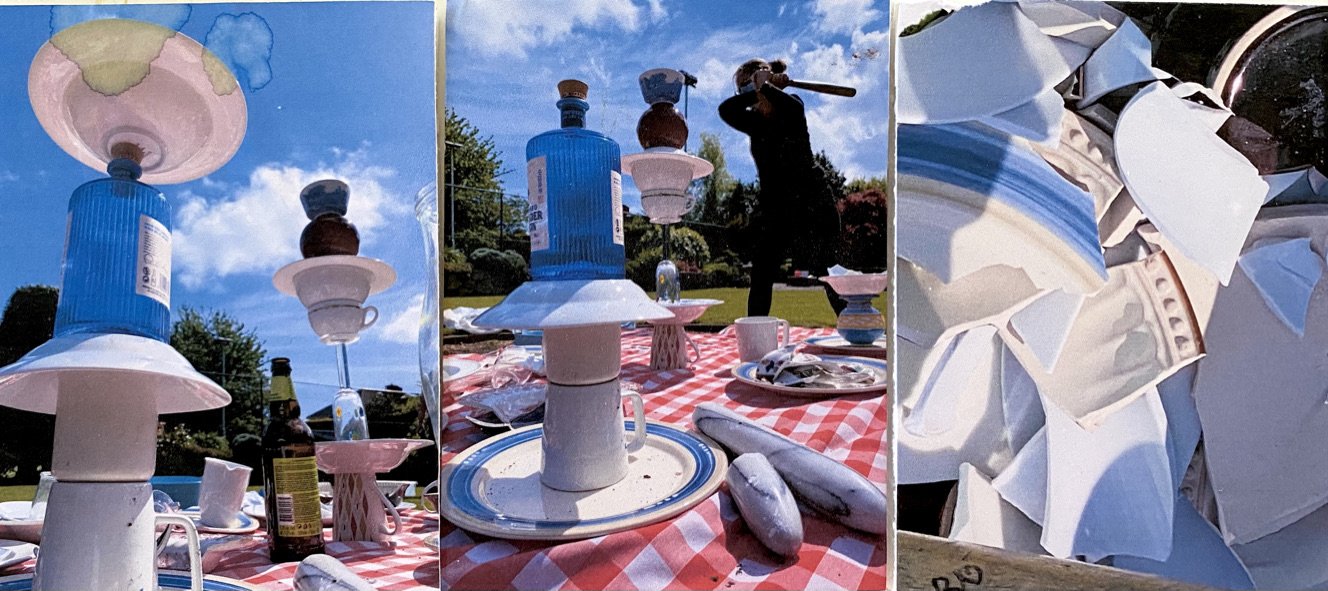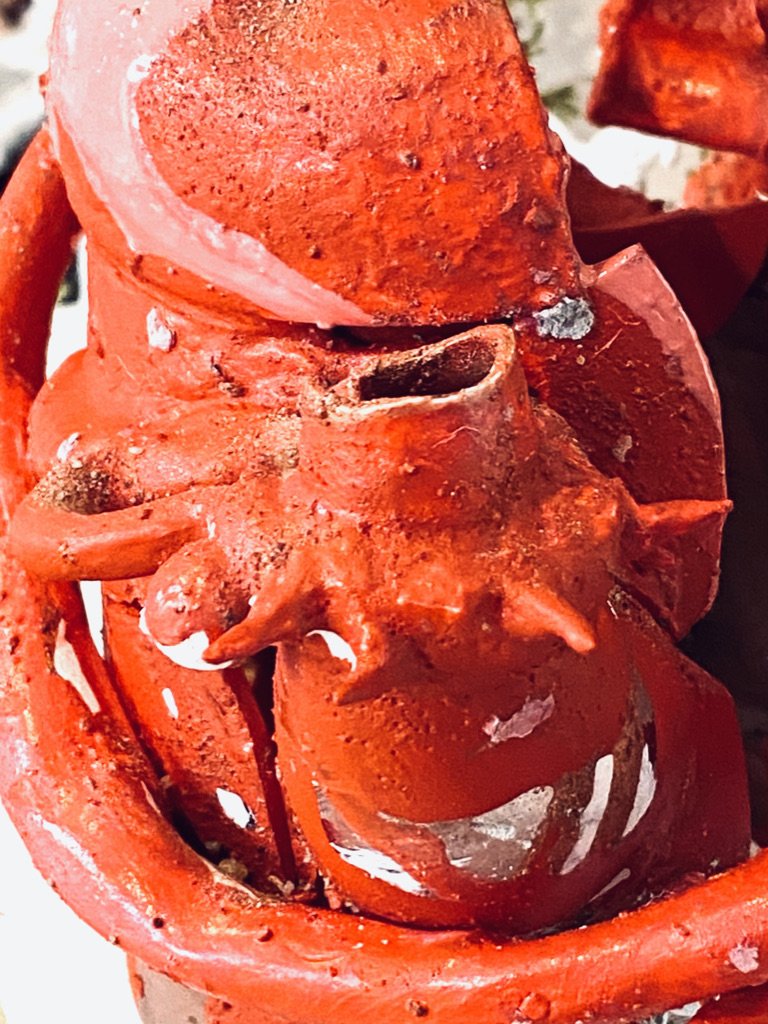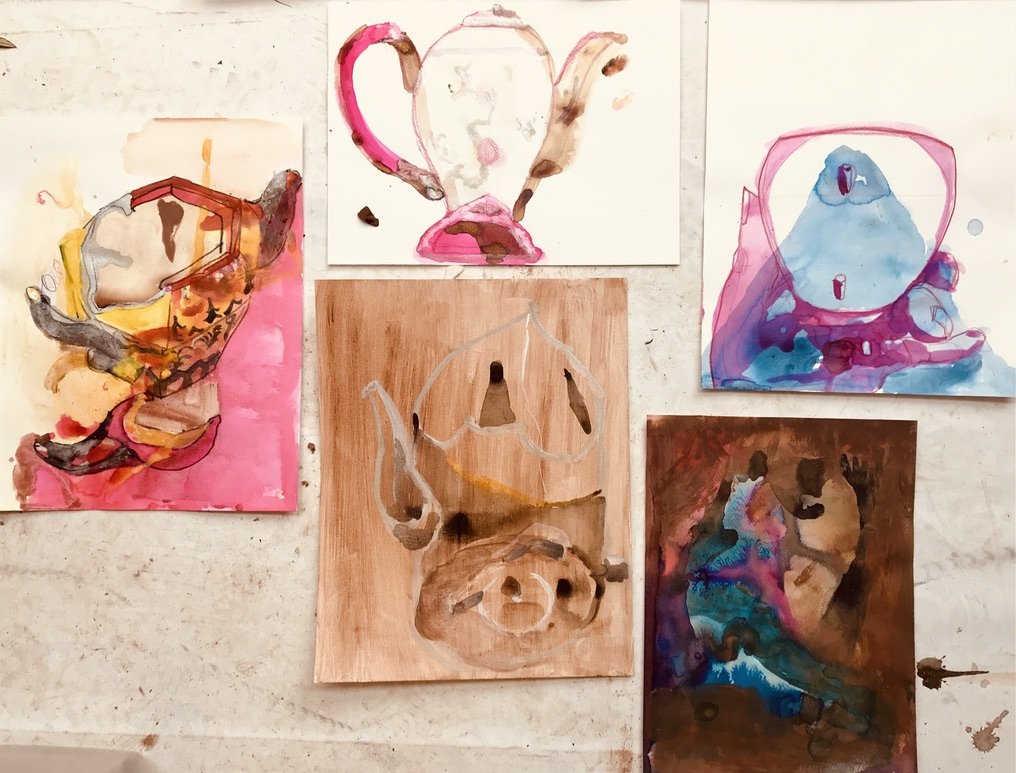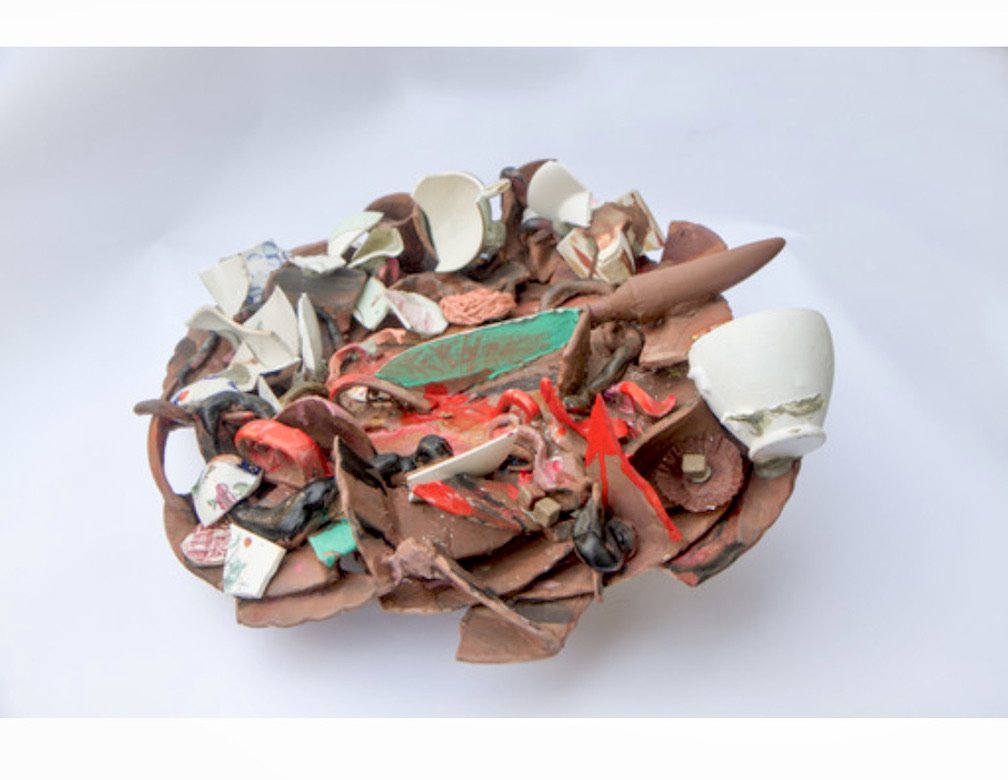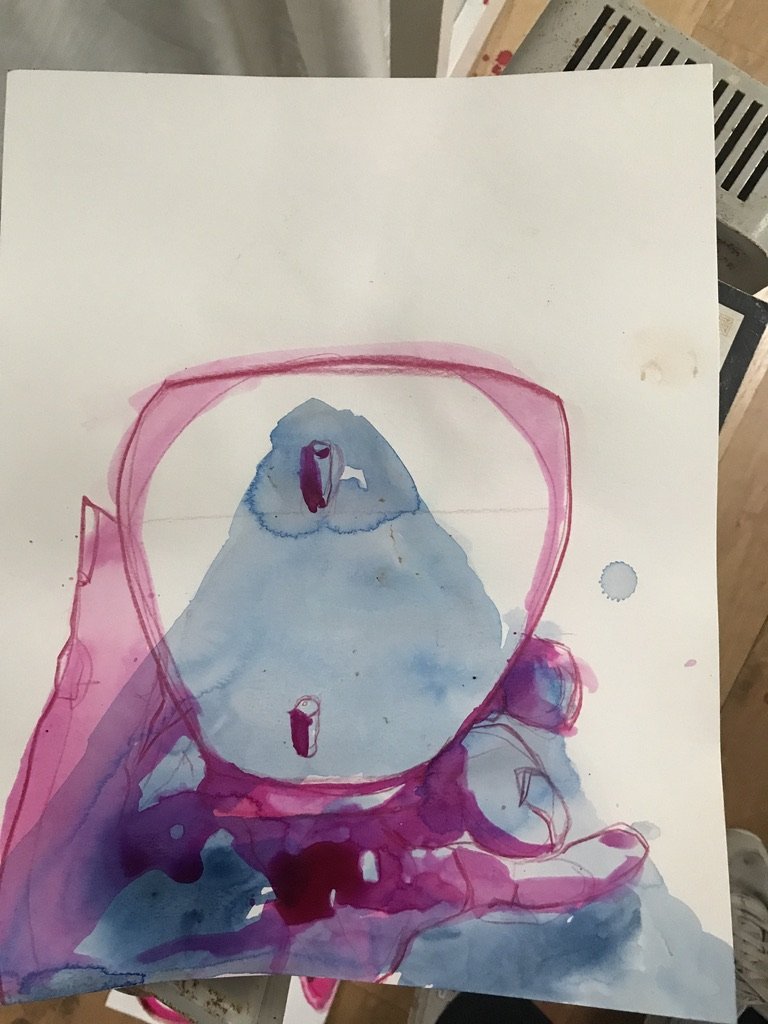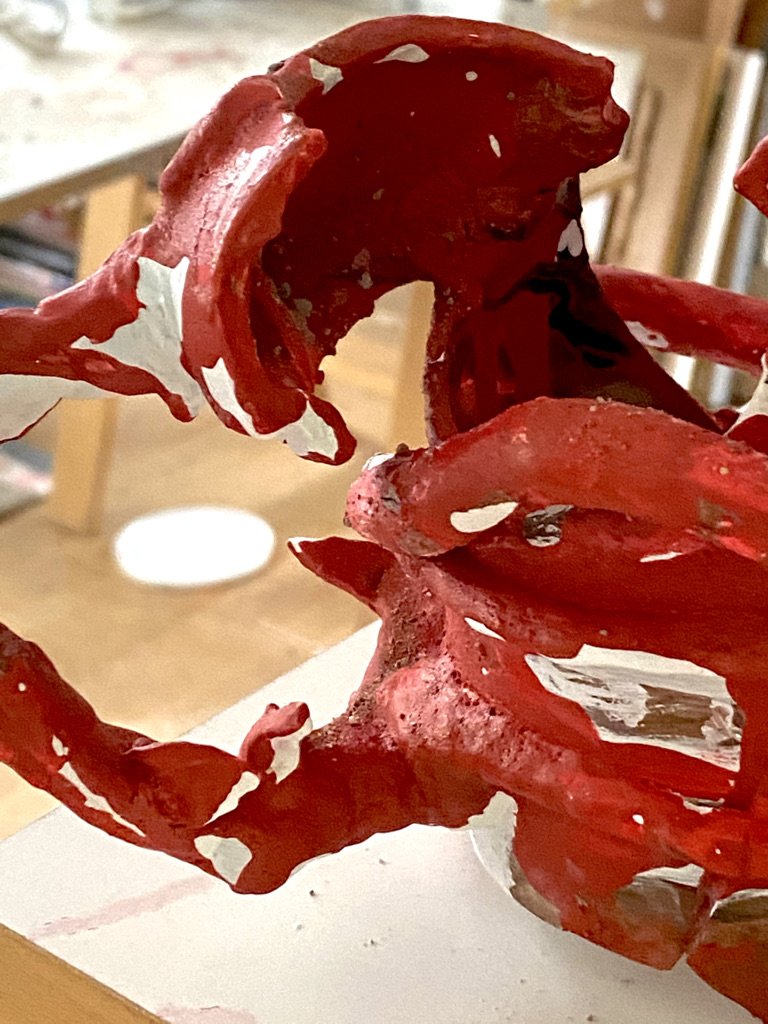PICKING UP THE PIECES, ‘The Imperfect Art Collaborative’
Cathy Hayes
Darina Meagher
Annmarie Webb
From the homicidal bitchin'
That goes down in every kitchen
To determine who will serve and who will eat
From the wells of disappointment
Where the women kneel to pray
For the grace of God in the desert here
And the desert far away
Excerpt from ‘Democracy’ Leonard Cohen, 1992
The philosophical idea of Kintsugi; accepting and appreciating the beauty of repaired ceramic ware, which accepts the imperfection and appreciates the history associated with its age and accidents. This work is inspired by how this idea can be transcribed onto ourselves. The media’s obsession with women’s appearances and value holds a sense of power over us, setting up a dynamic of attraction and repulsion by presenting such unobtainable images and goals. Perhaps not unlike the unattainable goals which the church set for Irish women in our not so distant past.
And so, the ritualistically breaking and re making the dishes.
The sculptural element compromises of the recreation of the female form, the mother. She which will be created from the broken pieces of domestic ceramics. It is a move to re-create this large female form, incorporating ideas about ancient powerful archetypes such as the three headed Morrigan as a new Trinity. The materials are raw and painted.
The Imperfect Art Collaborative’, began collaboratin during the Pandemic, while researching for the Artnetdlr collaborative exhibition ‘Metamorphosis’. We discussed and shared our ideas over the winter of 2020 via Zoom, which eventually culminated in meeting face to face outdoors and making an impromptu photographic installation, inspired by our online discussions. The process of collaborating proved invaluable to all of our practices and as a result we have formed ‘The Imperfect Art Collaborative’, in order further our work together on certain projects.
Through our conversations we discussed how the burden of domestic work and home-schooling, along with endless meal preparation (each and every day), became increasingly arduous for many women and how this was highlighted and exasperated during the Pandemic. We became interested in the significance of the evening meal and all the rituals and apparatus that surround it, as well as its symbolic connotations. We shared some of our own emotions and experiences associated with this daily occurrence, where upon one of us confessed to having a secret collection of chipped and broken plates, plates that she broke by hurling them in frustration. Another artist observed that her mother was always trying to “fix her”. This became a pivotal word for us as we all recognized the extent to which women are subjected to being ‘fixed’.
